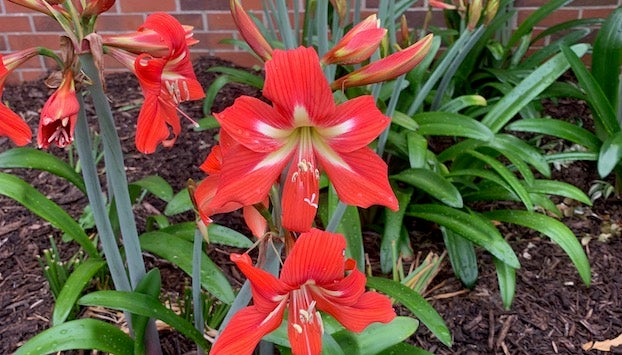My Amaryllis has bloomed and is gorgeous, what do I do with it now?
Published 5:21 pm Thursday, December 1, 2022
|
Getting your Trinity Audio player ready...
|
I was talking with someone from Washington Park last week and she asked me, “What do you do with those amaryllis bulbs after they flower? Can you put them outside since they’ve been forced?” The short answer is yes but let’s talk about how
Terra Ceia, loosely translated, means “Where Heaven meets Earth or Heavenly Earth”. The area is aptly named if you have ever witnessed one of the amazing sunsets that could only have been created from Heaven above. Dutch immigrants settled in the Terra Ceia area, circa early 1940’s, seeking a place to grow flowering bulbs. They established Terra Ceia Farms to grow for the cut-flower industry and later established a thriving flowering bulb market. They donated a number of the Dutch Amaryllis (from the genus Hippeastrum sp.) to the Terra Ceia School Fall Auction fundraiser and my wife bought me one a few years ago. The bulb had already been planted and was just before sending up the flower stalk.
Although I knew what the amaryllis was, I had never grown one. I had to do a little research into the care of the bulb and flowers. As I did, the long flower stalk began to grow. My children and I watched and even attempted to measure the daily growth. Before long, we found ourselves impatiently waiting for the blooms to blossom. We had five blooms and we were making bets on how the colors would look. One by one they began to open, revealing a red flower with what could only be described as a sunburst pattern of white near the base of the flower. They were heavenly! As we watched, we began to notice a second flower stalk starting to come up from the bulb. We are now waiting to see just how many blooms this one will have. This lead me to the question, “What do I do with it once the blooms are gone?
By the way, amaryllis is a bit of a generic term that describes plants in both the Amaryllis and Hippeastrum genus. They are different. Plants belonging to the Hippeastrum genus are hardier (USDA zone 7a) and are typically what we see in ornamental beds. Most plants from the Amaryllis genus (USDA zone 8a) are grown in our area as house plants unless sheltered. Here we can get away with plants in zone 8a most years but not every year.
First it is important to understand that the plant does not normally bloom in the late fall or middle of winter, they typically bloom in late winter to early spring. The bulb has been forced to bloom early by keeping it in a cool, dry place for several weeks. Most spring bulbs need a period of cool weather to trigger blooming. This doesn’t mean that they cannot be grown outside but there are a few steps necessary to ensure success. When blooms begin to fade, cut the flower stalk off near the top of the bulb. Begin to fertilize using a liquid fertilizer mix once a week or use one application of slow-release pellets sprinkled on top of potting soil after bloom. Water when the soil feels dry and keep inside until after the threat of frost has passed.
Once the threat of killing freeze has past, acclimate the plant to the outdoors by placing it outside for a few hours at first for a couple of days and then all day for a few days. Plant outside in a sunny to part shade bed having well-drained soil. Plant as was planted in the pot with 1/3 of the bulb above the soil surface. Do not allow the bulbs to dry completely out. To help conserve moisture and reduce weed pressure, use a layer of mulch around the bulbs.
Once planted outdoors, plants will return to their normal bloom cycle. Amaryllis are adaptable to many sites and are typically deer and vole resistant. Please remember, resistant doesn’t mean that they will never have damage from these animals but that the likelihood of damage is low. Learn more about this plant and others by visiting our Extension Gardener Plant Toolbox at plants.ces.ncsu.edu. Amaryllis are a wonderful addition to your landscape and will continue to bloom for many seasons!
If you have a question to submit, please email me at gene_fox@ncsu.edu. Having trouble with growing in your home landscape, ask an Extension Master GardenerSM Volunteer (EMGV’s) through the Blacklands Area Horticulture Facebook page or visit the Extension Office located at 155 Airport Road in Washington, NC!






